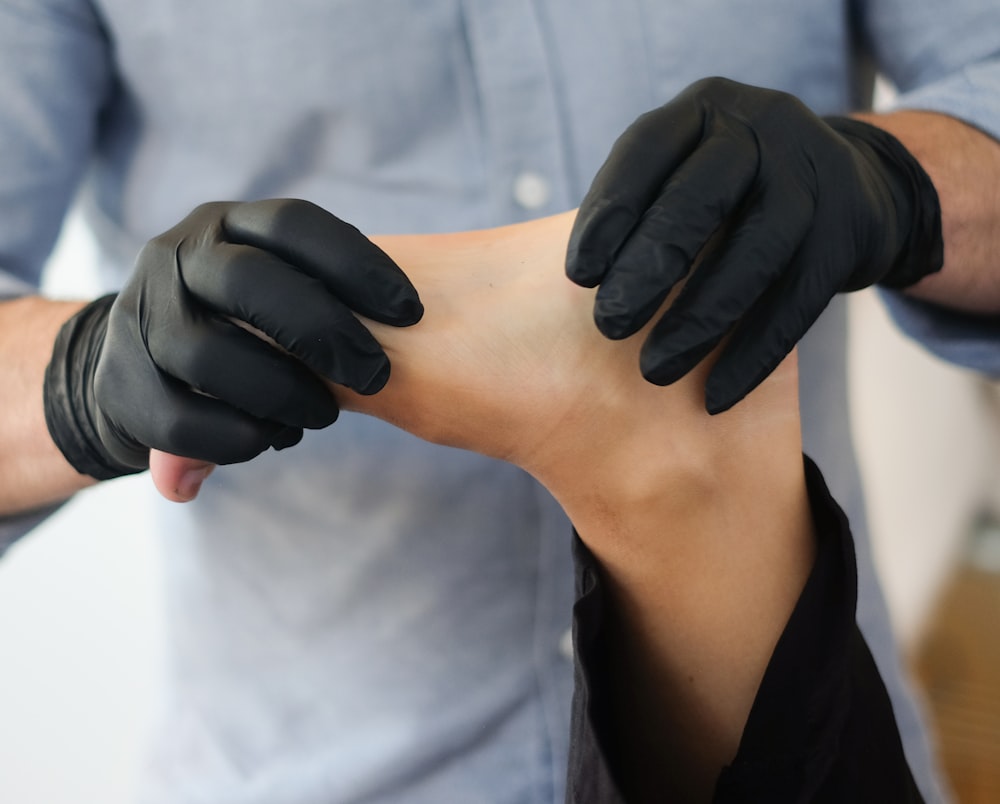目次
足関節不安定症に対する有効な保存的介入は?
足関節周囲の外傷を既往に持つ者では足関節不安定症が問題になることが多いです.
理学療法士・作業療法士であれば足関節不安定症に対して様々な介入をされると思います.
しかしながら足関節不安定症に対してはどのような介入が有効なのでしょうか?
今回は足関節不安定症に対する有効な保存的介入を考えるうえで参考になる論文をご紹介させていただきます.

今回ご紹介する論文
REVIEW ARTICLE (META-ANALYSIS)|ARTICLES IN PRESS
Effects of Conservative Interventions on Static and Dynamic Balance in Individuals with Chronic Ankle Instability: A Systematic Review and Meta-Analysis
Yuta Koshino, Ph.D
Takumi Kobayashi, Ph.D
Published:November 20, 2022
今回ご紹介する論文は2022年に掲載された論文です.
研究の目的
: To determine which conservative interventions are effective for static and dynamic balance in patients with chronic ankle instability (CAI).
この研究では慢性足関節不安定症(CAI)例の静的・動的バランスに対して,どのような保存的介入が有効であるかを明らかにすることを目的としております.
データソース
PubMed, Cochrane Library, Web of Sciences, and CINAHL databases were searched up to March 20, 2022.
PubMed,Cochrane Library,Web of Sciences,CINAHLデータベースを2022年3月20日まで検索しております.
研究の選択
Randomized controlled trials investigating the effects of conservative interventions on static and/or dynamic balance in patients with CAI compared to those of different conservative interventions or controls were included.
慢性足関節不安定症例の静的・動的バランスに対する保存的介入の効果を,異なる保存的介入または対照と比較検討した無作為化対照試験を対象としております.
データ抽出
Two independent reviewers extracted the data. Certainty of the evidence was assessed using the GRADE approach.
独立した2名のレビュアーがデータを抽出しております.
エビデンスの確実性はGRADEのアプローチで評価しております.
データ統合
Forty-eight studies (1906 participants) were included. Whole-body vibration training (WBVT) was significantly more effective than controls for both static (standardized mean difference, 1.13; 95% confidence interval (CI), 0.58–1.68; moderate-certainty evidence) and dynamic balance (0.56; CI, 0.24–0.88; low-certainty evidence). Balance training (BT) and joint mobilization were significantly more effective than controls for dynamic balance (0.77; CI, 0.41–1.14; and 0.75; CI, 0.35–1.14, respectively), but not for static balance (very low to low-certainty evidence). Adding other interventions to BT had no significant effect on either type of balance compared to that of BT alone (moderate to low-certainty evidence). Strength training (ST) and taping had no significant effect on either type of balance (very low- to low-certainty evidence). Multimodal interventions were significantly effective in improving dynamic balance (0.76; CI, 0.32–1.20; low-certainty evidence). Adding transcranial direct current stimulation to ST was significantly more effective for dynamic balance than ST (0.81; CI, 0.08–1.53; moderate-certainty evidence). The effects on balance were not significantly different among BT, ST, and WBVT (very low- to low-certainty evidence).
48件の研究(参加者数1906例)がメタアナリシスの対象となりました.
全身振動トレーニング(WBVT)は静的バランス(標準化平均差,1.13;95%信頼区間(CI),0.58-1.68;中確実性の証拠)および動的バランス(0.56;CI、0.24-0.88;低確実性の証拠)ともに対照群と比べて有意により効果的でありました.
バランストレーニング(BT)および関節可動域は,動的バランス(それぞれ0.77;CI,0.41-1.14;および0.75;CI,0.35-1.14)については対照よりも有意に効果がありましたが,静的バランス(非常に低い~低い確実性の証拠)については有意ではありませんでした.
バランストレーニングに他の介入を追加しても,バランストレーニング単独の場合と比較していずれの種類のバランスにも有意な効果はありませんでした(中程度から低確実性の証拠).
筋力トレーニングおよびテーピングは,いずれのタイプのバランスにも有意な効果を示しませんでした(非常に低い~低い確実性の証拠).
複合的介入は動的バランスの改善に有意に有効でありました(0.76;CI,0.32-1.20;低確実性の証拠).
経頭蓋直流刺激を追加することは筋力トレーニングよりも動的バランスに有意に有効でありました(0.81;CI、0.08-1.53;中確実性の証拠).
バランスに対する効果はバランストレーニング,筋力トレーニングおよび全身振動トレーニングの間で有意差はありませんでした(非常に低い~低い確実性の証拠).
研究の結論
: The significantly effective interventions reviewed may be treatment options for balance impairments associated with CAI. However, interventions should be chosen carefully, as much of the certainty of evidence is very low to low.
レビューされた有意に効果的な介入は慢性足関節不安定症に関連するバランス障害の治療選択肢となり得ます.
しかしながらエビデンスの確実性が非常に低いか低いものが多いため介入は慎重に選択される必要があります.
今回は足関節不安定症に対する有効な保存的介入を考えるうえで参考になる論文をご紹介させていただきました.
今回の結果から考えるとバランストレーニングを中心としたトレーニングが有効ということになりますね.






